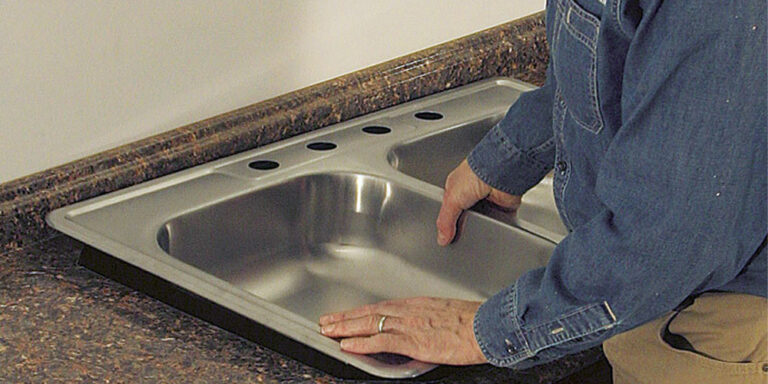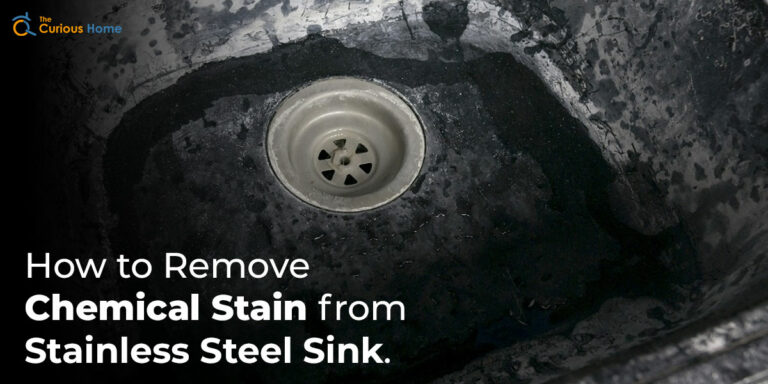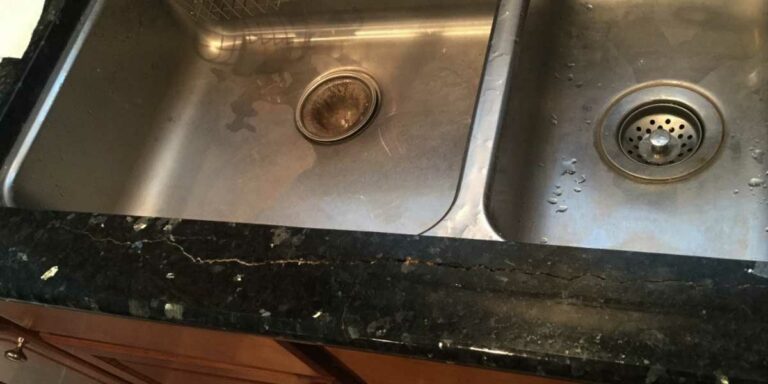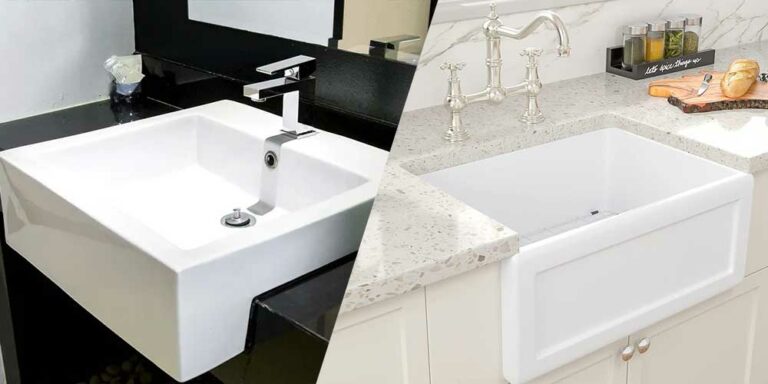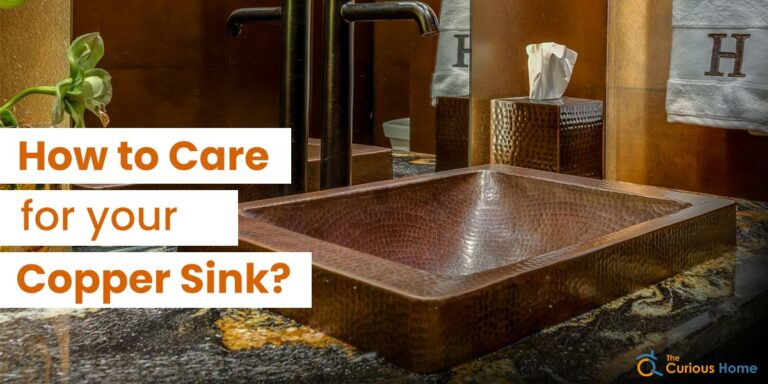Granite Composite Sink Problems | What You Need to Know Before Buying
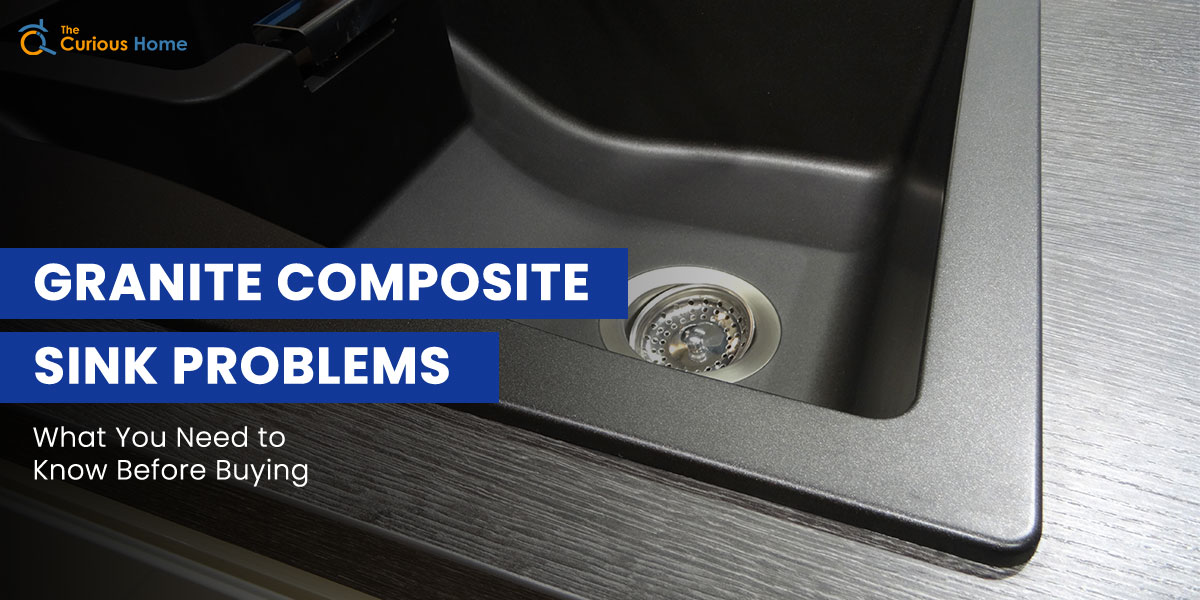
When it comes to selecting a sink for your home, granite composite sinks are a popular choice due to their durability, aesthetics, and resistance to heat and stains. However, like any product, they can also come with a set of problems. In this article, we will focus on the top-rated granite composite sinks on the market and the most common issues associated with them.
From cracking and discoloration to issues with cleaning and maintenance, we will provide you with an in-depth analysis of all the problems as well as compare the problems of other sink types to granite composite sinks so that you can get a clear idea.
Understanding Granite Composite Sinks
Granite composite is a stunning, strong, and cost-effective sink alternative that goes well with most countertop materials (often known by the brand name Silgranit, a durable patented composite by Blanco). Granite composite, commonly constructed of 80% granite and 20% acrylic resin, resembles natural stone in appearance and feel but costs a lot less.
Granite composite can be customized to fit any kitchen’s needs by coming in various forms, sizes, arrangements, colors, and matte finishes. They are offered in every style of sink, including single-basin, double-basin, and even the less popular triple-basin model.
Granite composite sinks are strong, resilient, and long-lasting. Each piece is distinctive. They are resilient to stains, heat, and scratches.
Common Problems With Granite Sinks
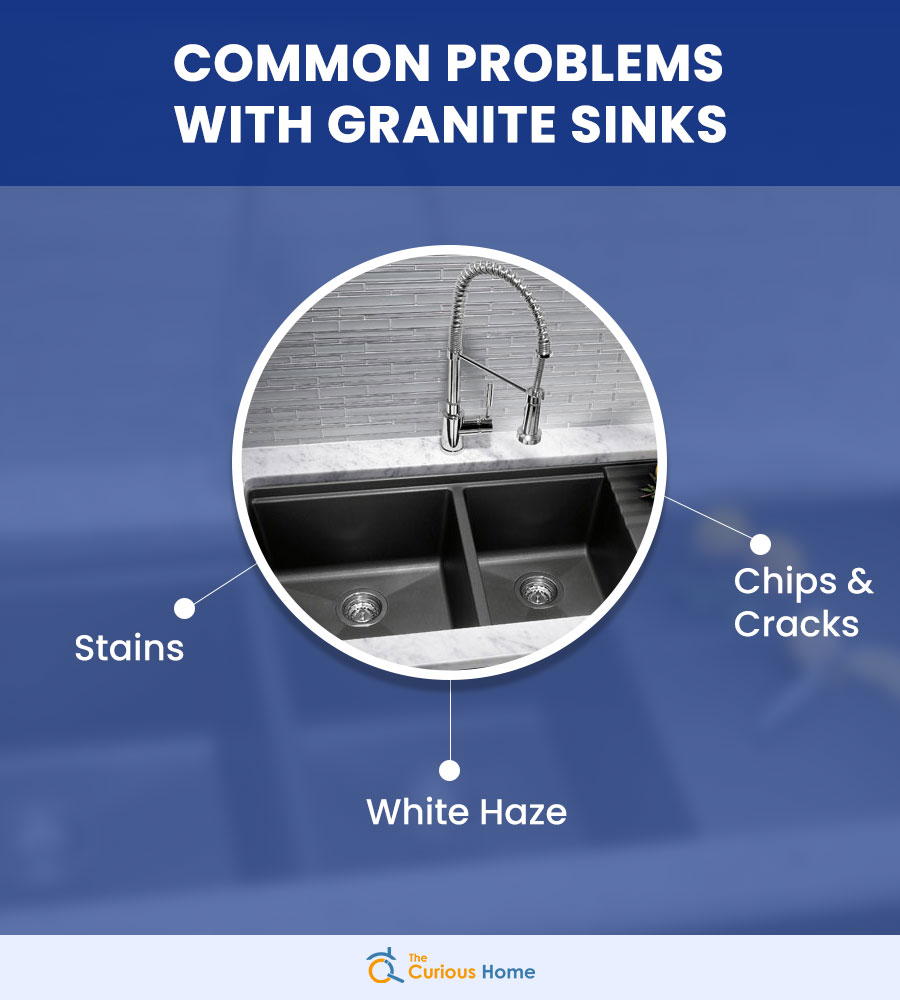
1. White Haze
Composite granite sinks frequently attract a white, filmy layer. Even though this issue affects sinks made of different materials, composite granite sinks, particularly those with darker hues, tend to show it more prominently. The mineral deposits left behind by evaporating water cause these sinks to often become hazy in white. Calcium and lime are left over when the water evaporates.
This wouldn’t be a problem in most cases. But if you use abrasive pads to clean your sink, the deposits will accumulate in the chips and cracks and leave a cloudy surface. Naturally, this issue can be resolved quickly with routine upkeep and care. And once it does, what happens? White vinegar can help; after each usage, ensure the sink is completely dry.
2. Chips And Cracks
Chips and cracks are typically not an issue with these sinks due to the natural durability of the stone. But because they do show up, it’s important to notice. Usually, when you drop a large pot or pan into the sink, it may chip or crack. Or perhaps one of your children jumps or stands in the sink, which could potentially result in a crack.
When cracks and chips are typically repairable if they are not too severe. The cost of repair will increase as the severity of the break increases. However, it’s best to leave the deep chips and cracks to the specialists. You might be able to DIY-fix tiny chips.
3. Stains
These sinks are frequently stain-resistant because of the composite granite’s nonporous surface. But in this case, resistance is the essential word. They can still absorb stains. So, if you leave brightly colored foods or fluids in the sink (such as tomatoes, wine, or fruit juice), they might leave you a little brightly colored surprise.
This is particularly true for lighter-colored sinks because stains stand out much more in darker shades. This issue is absolutely preventable.
To guarantee that no stains develop, avoid leaving colored meals and beverages in the sink after rinsing away any leftover residue. Instead, rinse the sink after you’re through. You can easily remove tough stains, by using a small amount of baking soda and vinegar despite their difficulty.
Maintenance And Care
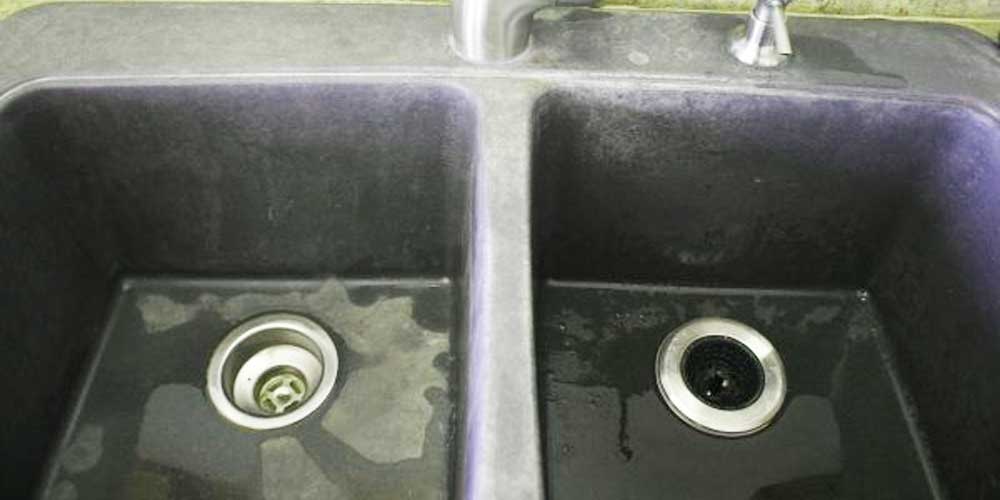
A granite composite sink requires routine maintenance despite the fact that it is extremely durable and resistant to most forms of harm. Sinks with a lighter finish are more likely to reveal stains, whilst those with a darker finish are more likely to display a film of white residue.
- Daily cleaning of the sink should involve using a nylon brush and mild soap; in this case, dishwashing soap will suffice.
- After each use, or on a daily basis at the very least, you should give the sink a good scrub with a soft cloth and give it a good rinsing to remove any residue that may have been left behind, such as
- It is not appropriate to use any cleaning instruments or solutions that are abrasive.
- On a consistent basis, you should use a specialized cleaning product in addition to natural cleaning agents such as vinegar.
- Following the cleaning process, give the surface a shine by wiping it down with a very small amount of cooking oil.
Comparison With Other Sink Materials And Their Problems
1. Granite Composite vs Quartz Composite
To all intents and purposes, granite composite sinks and quartz composite sinks are virtually indistinguishable from one another. Both types of composite sinks are made of real stone (granite or quartz) that has been crushed and blended with acrylic resin.
2. Granite Composite Sink vs Stainless Steel Sink
When it comes to comparing stainless steel and granite composite sinks they both are very dissimilar from each other in various factors. Each has particular benefits and drawbacks. Stainless steel is more affordable and easier to maintain than granite, but it lacks the variety of colors and durability of the stone. Granite is less likely to be damaged and creates less noise.
3. Granite vs Granite Composite Sinks
The stone is unaltered and is a genuine granite sink. These sinks typically show distinctive patterns, veins, and color variations because they are cut from granite slabs. Sinks made of natural granite are all unique.
The granite is crushed and combined with acrylic resin to create a composite sink. The blend produces a consistent tint across the entire sink, giving it a look that is very different from actual stone.
Pros of granite composite sinks
- Heat-resistant; won’t deteriorate or fade when exposed to high heat
- can withstand abrasion, acid, chipping, water stains, and fading.
- alternatives for matte colors in abundance
- Have a long life
- At a fraction of the cost, get the look and durability of natural stone.
Cons of granite composite sinks
- installation may need additional assistance
- Regular but easy upkeep is necessary
- If not regularly cleaned, finishes with lighter hues could become dulled by aqueous minerals.
Conclusion
Durability, strength, and natural beauty are all features of granite composite sinks. It gives the kitchen an appearance of luxury and makes clients happy with how long it lasts.
They do, however, bring particular issues. Users of these sinks grow dissatisfied as they begin to break and lose color over time. They appear richer and have a smoother finish. Although they may cost more, they are worth the extra money because they are superior to everything else.


